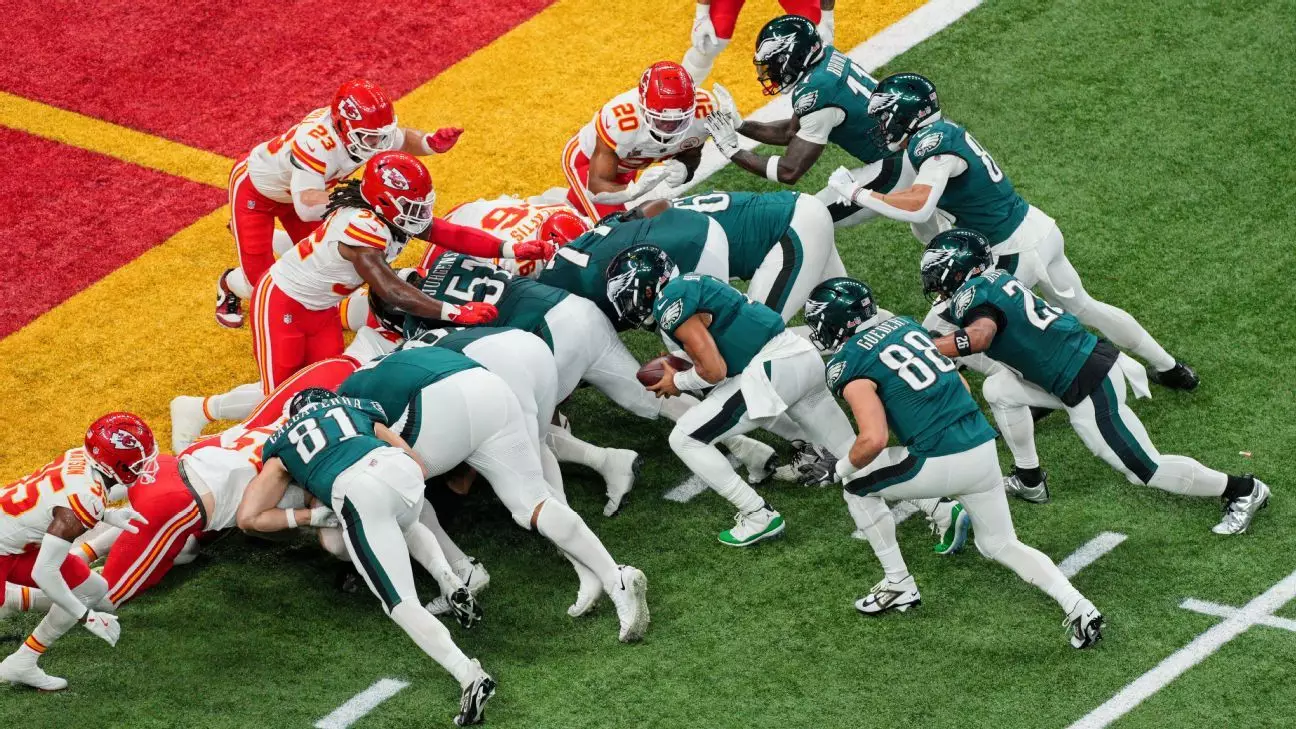The National Football League (NFL) is no stranger to controversy surrounding player safety, gameplay aesthetics, and tactical innovation. One of the latest discussions revolves around the quarterback sneak maneuver popularly referred to as the “tush push.” Recently, an unnamed NFL team proposed a rule change aimed at banning this technique, prompting a wave of reactions from players, coaches, and fans alike. This article delves into the implications of this proposal, evaluating its potential impact on the game and exploring the broader context of innovation in football.
The “tush push” involves offensive teams positioning players behind the quarterback to propel him forward during short-yardage situations. This tactic has garnered significant attention due to its effectiveness, particularly when executed by teams like the Philadelphia Eagles and the Buffalo Bills. Over the last three seasons, these two teams have achieved higher success rates with this play compared to the rest of the league. The records indicate an impressive 87% success rate for the Eagles and Bills combined, highlighting a tactical advantage they exploit to gain critical yards.
Jalen Hurts, the quarterback for the Eagles, famously utilized this method to score during Super Bowl LIX, showcasing its potency on football’s biggest stage. This play not only aids in achieving first downs but has also become a subject of intrigue for defensive teams trying to formulate strategies to counter it. Yet, it begs the question: is a highly successful play deserving of being suppressed due to its effectiveness, and what does that say about adaptability within the league?
The Backlash and Support for the “Tush Push”
Given its high success rate, the “tush push” has divided opinions among NFL stakeholders. Advocates, including Eagles coach Nick Sirianni, argue that the play contributes to the strategic diversity in the game. Sirianni expressed apprehension about altering a rule simply because his team excels at it, suggesting a celebration of tactical execution should outweigh concerns over its challenges. This perspective underscores a critical point; teams that innovate and develop effective strategies should be rewarded rather than penalized.
Conversely, the proposal to ban the play has been largely framed around safety concerns and the risk of injury. The NFL’s executive vice president of football operations, Troy Vincent, hinted at apprehensions that the “tush push” could lead to dangerous collisions, both for players in the scrum and for defenders attempting to counter the play. This split in ideology – where enjoyment of the competitive spirit clashes with the league’s ongoing commitment to promote player safety – further complicates the discussion of rule changes.
Evaluating the Implications for the NFL
Should this proposal progress and gain acceptance among owners, it could substantially alter how teams approach short-yardage situations. For many teams, the need to rely on traditional rushing or passing strategies without the “tush push” could lead to drastic changes in play-calling. Coaches might find themselves re-evaluating their offensive strategies, leading to a potential decrease in diversity in gameplay.
Moreover, this ruling could set an interesting precedent regarding the league’s approach to successful tactical innovations. If a play is deemed too effective, should the league rush to diminish its impact? Historically, NFL teams have adapted to create schemes that exploit rule loopholes or common defensive weaknesses. Observing how the league manages its rules in relation to innovation will be crucial for fostering a vibrant and competitive environment.
As the NFL gears up for its spring owners’ meeting where this proposal will be up for a vote, the outcome remains uncertain. A total of 24 out of 32 franchises must back the rule change for it to pass, implying that the discussions leading up to the meeting will be essential. How teams and their owners perceive the fine line between competitive fairness and safety will dictate the future of playing rules in American football.
The debate around the “tush push” reflects not just on a single play but also on the broader culture of the NFL. As teams evolve and innovate, establishing guidelines that promote both creativity and safety will be a defining challenge for the league. The upcoming discussions may very well reshape critical aspects of American football in unforeseen ways.


Leave a Reply